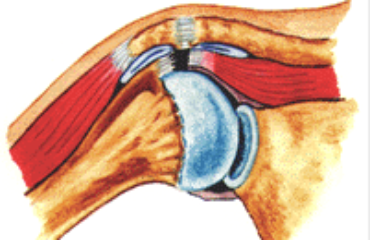Frozen shoulder refers to a condition known as adhesive capsulitis which affects around 2 percent of the population. Frozen shoulder is most common in women between the ages 40-60.
This condition causes the shoulder to become stiff and sore, eventually limiting the mobility of the joint. This is caused by the capsule of the shoulder tightening and adhesions developing on the joint.
The causes of frozen shoulder are not yet fully understood, but some conditions such as diabetes, hyperthyroidism, cardiac disease or Parkinson’s disease can put individuals at greater risk for  developing the condition. If the shoulder must remain immobile following surgery or injury for an extended period, this can also cause a frozen shoulder.
developing the condition. If the shoulder must remain immobile following surgery or injury for an extended period, this can also cause a frozen shoulder.
Stages of Frozen Shoulder
There are multiple stages of frozen shoulder which are defined by how severe the damage and immobilization has become. The type of treatment options required will vary based on one’s diagnosed state.
- Freezing shoulders are those that are experiencing pain which is increasingly becoming worse. Over the course of 6-9 months you will also continue to lose mobility in the joint.
- Frozen shoulders may see a diminishing amount of pain in the joint, but will still feel stiff. This stage can last 4-6 months and during this time it may be difficult to perform any activities that involve moving the shoulder. This condition may last longer if the frozen shoulder is not addressed.
- Thawing shoulder refers to the point where mobility begins to return to the joint. It can take between 6 months and two years to fully restore movement and strength to a shoulder once it enters the thawing stage.
Treating Frozen Shoulder
The first step in treating a frozen shoulder should be working with your Phoenix orthopedic doctor to  determine the extent of your injury. Your doctor will move your shoulder around to determine which directions are limited and which cause discomfort.
determine the extent of your injury. Your doctor will move your shoulder around to determine which directions are limited and which cause discomfort.
This will be compared to your ability to move your shoulder on your own, as frozen shoulder can cause both passive and active limitations on mobility. Your doctor may also want to perform imaging tests such as an MRI or x-ray to ensure that arthritis or similar issues are not the true culprit of your limited mobility.
In most cases a frozen shoulder can be treated with nonsurgical means. Patients will be encouraged to use NSAID medications to reduce swelling and pain in the joint. Steroids can also be injected into the joint to reduce discomfort in a frozen shoulder.
Most of the treatment for a frozen shoulder will focus on physical therapy that can be slowly used to stretch the joint to restore your range of motion to the shoulder. Your Phoenix shoulder surgeon may advise you to apply heat to the joint before each therapy session to loosen the ligaments, but you should only do this if you have been expressly told to do so.
The specific exercises you will need to perform will vary based on what range of motion you have lost. You will need to rotate your arm or lift the arm above your head, or in some cases across the body. These stretches will be increased in difficulty as you continue to return strength and mobility  to hour shoulder.
to hour shoulder.



